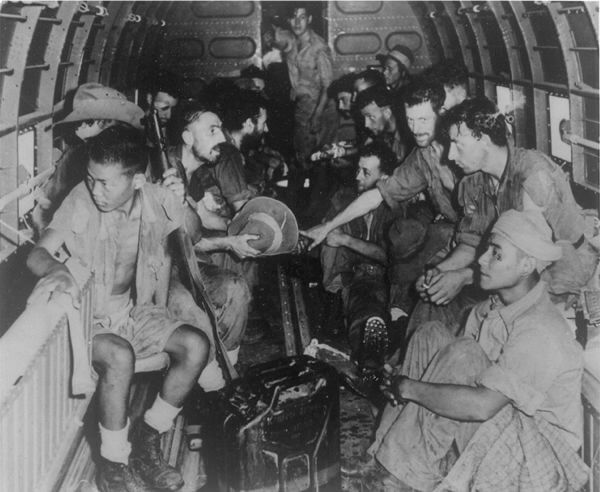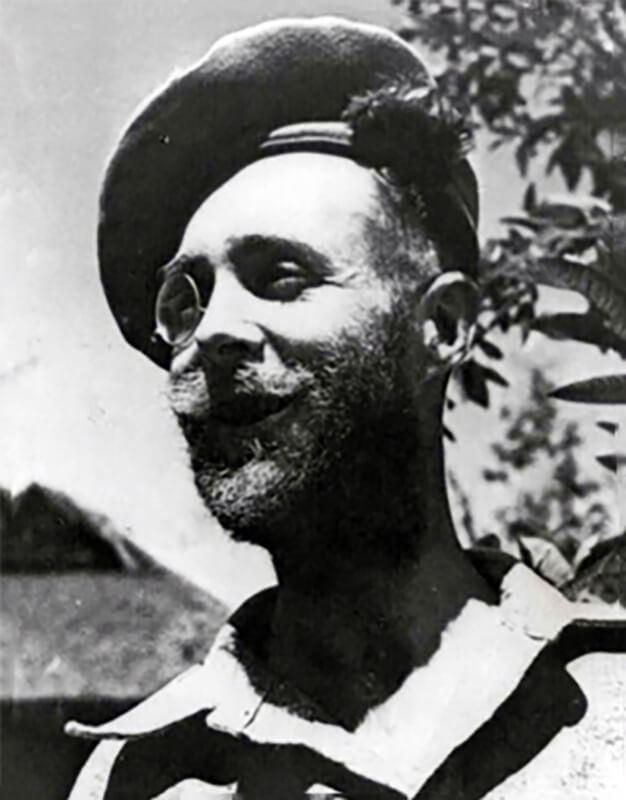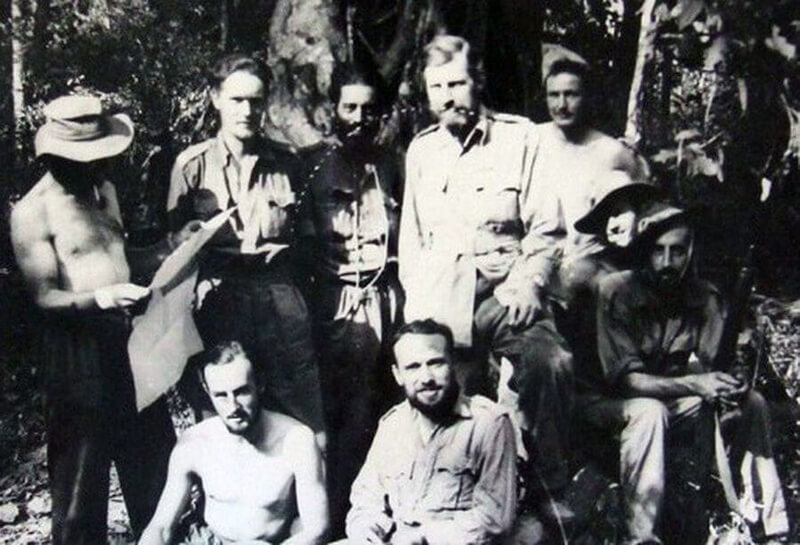| Page Created |
| March 22nd, 2023 |
| Last Updated |
| March 22nd, 2023 |
| Country |
 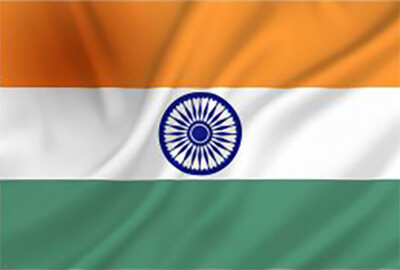 |
| Special Forces |
| Chindits |
| February 14th, 1943 – July 12th, 1943 |
| Operation Longcloth |
| Objectives |
- No. 1 Group (Southern) consists of two columns (1,000 men and 250 mules, horses, and oxen), with orders to cut the railway to the south near Kyaikthin from there they had to move on to Mongkin and wait for the No. 2 Group or await further instructions. Their main objective is to divert attention from the No. 2 Group.
- No. 2 Group (Northern) consists of five columns (2,200 men and 850 mules, horses, and oxen). Their objective is to attack the north-south railway and facilities near the town of Nankan, in an area known as “Railway Valley”.
| Operational Area |
| Unit Force |
- Headquarters
- Commander, Brigadier O. C. Wingate
- Brigade Major, Major R.B.G. Bromhead (succeeded by Major G.M. Anderson)
- Staff Captain, Captain H.J. Lord
- Deception party, Commanding Officer, Major Jeffries
- No. 1 Group, (Southern) Officer Commanding Lieutenant Colonel Leigh Alexander (died during the operation)
- 1 Column (Major Dunlop)
- 2 Column (Major Burnett)
- No. 2 Group (Northern), Commanding Officer Lieutenant Colonel S.A. Cooke
- 3 Column (Major Michael Calvert)
- 4 Column (Major R.A. Conron) (replaced by Major R.B. Bromhead March 1st, 1943)
- 5 Column (Major Bernard Fergusson)
- 7 Column (Major K. Gilkes)
- 8 Column (Major Walter Scott)
- Headquarters Group (Burma Rifles), Commanding Officer, Lieutenant-Colonel L.G. Wheeler 2nd Burma Rifles (replaced by Captain P.C. Buchanan on the death of Lieutenant-Colonel Wheeler)
- No. 31 and No. 194 Squadrons, Royal Air Force
| Opposing Forces |
| Operation |
| February 8th, 1943 |
The Chindits begin their advance into Burma from Imphal and March towards Tamu. The complete Brigade of seven Columns moves together in that direction.
| February 13th, 1943 |
The Brigade arrives at Tamu and general General Wingate issues his last instructions and the issues his Order of the Day to his troops.
Today we stand on the threshold of battle. The time of preparation is over, and we are moving on the enemy to prove ourselves and our methods. At this moment we stand beside the soldiers of the United Nations in the front line trenches throughout the world. It is always a minority that occupies the front line. It is still a smaller minority that accepts with a good heart tasks like this that we have chosen to carry out. We need not, therefore, as we go forward into the conflict, suspect ourselves of selfish or interested motives. We have all had opportunity of withdrawing and we are here because we have chosen to be here; that is, we have chosen to bear the burden and heat of the day. Men who make this choice are above the average in courage. we need therefore have no fear for the staunchness and guts of our comrades.
The motive which had led each and all of us to devote ourselves to what lies ahead cannot conceivably have been a bad motive. Comfort and security are not sacrificed voluntarily for the sake of others by ill-disposed people. Our motive, therefore, may be taken to be the desire to serve our day and generation in the way that seems nearest to our hand. The battle is not always to the strong nor the race to the swift. Victory in war cannot be counted upon, but what can be counted upon is that we shall go forward determined to do what we can to bring this war to the end which we believe best for our friends and comrades in arms, without boastfulness or forgetting our duty, resolved to do the right so far as we can see the right.
Our aim is to make possible a government of the world in which all men can live at peace and with equal opportunity of service.
Finally, knowing the vanity of man’s effort and the confusion of his purpose, let us pray that God may accept our services and direct our endeavours, so that when we shall have done all we shall see the fruit of our labours and be satisfied.
O.C. Wingate, Commander,
77th Indian Infantry Brigade.
From here the force splits up in two groups and starts moving towards the Chindwin River. No. 1 Group (Southern) consisting of No. 1 and No 2 Columns marches towards Auktang, cross the river and from there will march during the day and will receive their supply drops during the day to draw the attention from the Japanese. No. 2 Group (Northern) marches towards Tonhe, croos the river there and from there will travel during the night and receive their supply drops during the night.
During the day No. 1 Group receives the frist of two supply drops.
| February 14th, 1943 |
Leading column No. 3 Column, led by Major Michael Calvert, crosses the Chindwin River at Tonhe, marking the beginning of Operation Longcloth. No. 5 Column, commanded by Major Bernard Fergusson find themselves in the worst possible position at the tail of the Brigade. Prior to crossing the Chindwin, Fergusson gathers his troops and reads out Wingate’s Order of the Day, ending with a prayer for guidance and satisfaction in their efforts. With five days’ worth of rations and heavy packs, they begin their final stage towards the river, encountering treacherous terrain and slippages caused by recent rains.
No. 1 Group receives the second of two supply drops during the day, before crossing the river.
| February 15th, 1943 |
The last column, No. 5 arrives at the Chindwin River. Fergusson the commander of No. 5 Column and two officers scout ahead and spot the site for the first supply drop, which is promised for the next night. However, news arrives that the Tonhe crossing is not going well. To avoid the confusion, Fergusson decides to cross at a point five kilometres upstream and march independently to the drop zone, with the option to return to Tonhe if necessary. After cutting through an overgrown track and reaching a deserted village, Fergusson surveys the Chindwin, finding the banks high and the river around four hundred metres wide. He hires a small native boat and decides to cross, but the far side proves challenging due to the steep banks there. To overcome this, they focus on a section where a stream enters the river, with less steep banks. Animal Transport Officer Bill Smyly devises a strategy of tying mules together and leading them across using canoes, while Cypher Officer Alex Gibson and the Gurkhas struggle to overcome the strong current. Fergusson is impressed by the skills of the Karens of The Burma Rifles, who are able to build boats from bamboo and ground sheets in a matter of minutes.
The other columns have also made it across the river by that time.
No. 1 Group crosses the Chindwin during that same period of time at Auktang, some forty kilometres to South of the Group 2.
| February 16th, 1943 – February 18th, 1943 |
The men and animals continue to march by night, resting in the dense jungle during the day. Night blindness affects some of the men, prompting the Column Commander to avoid bivouacking near tracks.
No. 3 Column also makes slow progress over the Zibyu Taungdan and Mangin Ranges, encountering only scattered enemy troops.
The Columns assemble at Myene, and during three consecutive nights sixteen successful air drops are made providing the force with 35,000 kilograms of supplies.
No. 1 Group arrives at Maingnyaung on the February 18th ,1943 and has their frist encounters with the Japanese. They are able to inflict some casualties. Unfortunately, a few mule loads are lost and they have to make a detour causing a bit of delay.
| February 19th, 1943 – February 22nd, 1943 |
No. 2 Group sets off towards Metkalet, where No. 3 Column reports a Japanese force of two hundred in Sinlaumaung.
However, bad marshy terrain blocks their path, and they have to build fourteen causeways to continue. Fergusson receives a signal from Brigade to stop and head towards Tonmakeng, where they will receive another big supply drop. They arrive here on February 22nd, 1943.
| February 23rd, 1943 |
Wingate faces the challenge that the country ahead is deemed unsuitable for supply drops. He makes the decision to request a massive drop at Tonmakeng, which is handled by Fergusson.
No. 7 Column commanded by Major K. Gilkes, No. 8 Column commanded by Major Walter Scott and Calvert’s No. 3 Column are ordered to investigate a Japanese force reported in Sinlaumaung.
| February 24th, 1943 – February 25th, 1943 |
No. 7 , No. 8 and No. 3 Column arrive at Sinlaumaung but find no enemy presence as the enemy has evacuated the area before they could be engaged. The three Columns start heading for the main body of the Northern Group again after liberating an elephant, a horse and eating the food from the Japanese even though most supplies have been destroyed.
Wingate issues orders for the next phase, instructing the Columns to enter the Mu Valley and turn south towards Pinlebu. No. 5 Column departs as the lead column at 03.00. The other Columns encounter each other repeatedly, primarily because the No. 5 Column, responsible for pioneering, makes sluggish progress. In certain instances, leading was more challenging than trailing.
As impatient as ever, Wingate personally demonstrates to Fergusson how to cut through the dense jungle more efficiently during No. 5 Column’s approach to the Pinlebu road. Instead of using two or three “slashers” in front, Wingate’s method employs an entire platoon. The leaders cut a narrow path just wide enough for themselves, and the remaining slashers steadily widened it as they progressed until it reached the necessary width of two metres to allow the mules to pass.
| February 26th, 1943 |
The force which attacked Sinlaumaung consisting of Columns No. 3, 7 and 8 returns to the main body.
| March 1st, 1943 |
Group 1 arrives at Pinbon and sets up a Bivouac.
Wingate then instructs Column No. 3 and No. 5 to leave the Brigade and move independently towards their primary objective and destroy the railroad. Column No. 3 has to destroy the railroad near Nankan and Coulumn No. 5 the railroad near Bon Chaung where they have to bring the gorge down onto the line. Afterward, both columns must cross the Irrawaddy River and move towards Mogok, and concentrate the Brigade there. The remaining three Columns will create diversions and draw the Japanese Forces from the railroad. Therefore, No. 4 Column must draw the Japanese garrison at Pinbon towards them, allowing Brigade headquarters, Group 2, and No. 7 and No. 8 Columns to move swiftly south down to Pinlebu road.
| March 2nd, 1943 |
Group No.1 has temporarily split up while Column No. 1 Moves a little to the North towards the railroad, Column No. 2 moves over a southern route. On this southern route Column No. 2 is ambushed by Japanese forces, resulting in heavy losses in men, equipment, and animals. In the event the column is split up in two groups. One part keeps moving east and tries to link up again with the Column No. 1 while the remainder retreats back towards the Chindwin River.
| March 3rd, 1944 |
Column No. 1 reaches the railroad at Kyaikthin and is able to destroy it on 5 different places and destroy a railroad bridge. While moving towards the Irrawaddy River they lay mines.
| March 4th, 1943 |
After circling around Pinbon No. 4 Column to draw the Japanese garrison there they try to rejoin Brigade headquarters, Group 2, and No. 7 and No. 8 Columns at Pinlebu. On their way there they run into a superior Japanese Force and are forced to retreat. In the event they lose a lot of equipment and supplies. This and the inability of contacting the rest of Group 2 they are forced to withdraw to Chindwin River.
Meanwhile Brigade headquarters, Group 2, and No. 7 and No. 8 Columns bomb the Japanese at Pinlebu with the help of the Royal Air force. After this the Group moves East towards Tawshaw.
| March 6th, 1943 |
No. 3 Column successfully reaches the railway line and carries out their mission of destroying two bridges and seventy other targets. While they are in the process of the demolition, they are ambushed by two trucks of Japanese infantry from Wuntho. However, the covering parties protecting the demolition teams fight fiercely and manage to break contact and drive off the enemy. The Japanese suffer some fifty casualties and lose three vehicles in the proces. No. 3 Column does not suffer any casualties and swiftly withdraws into the jungle to a predetermined rendezvous point. They leave behind numerous booby traps made from 3-inch mortar rounds in the surrounding area.
Meanwhile No. 5 Column is divided into its fighting groups and heads towards Nankan, the gorge, and Bonchaung Station’s bridge to engage the small Japanese garrison. Simultaneously, Captain John Fraser’s Burma Rifles (Burrif) party is instructed to scout the Irrawaddy River crossing point at Tigyaung, which is about fifty-five kilometres away.
As Fergusson’s group departs, a messenger arrives with news that the Nankan team was battling the Japanese in Kyaik-in village. Fergusson instructs his main group to proceed straight to Bonchaung, while the remaining Rifle Platoon provides backup for the Kyaik-in Village team. During the skirmish, Platoon Commander John Kerr and his group have encountered a parked Japanese truck in the village, which they shoot at, resulting in several enemy casualties. However, a new light machine gun opens fire on them, causing Kerr and several others to be hit. Even though, the truck is driven away, the team is unaware of any further threats. It was only when Fergusson arrives on the scene that he learns about the conditions of the wounded soldiers. Five men are unable to move, including Kerr. The remaining two soldiers are located, and Fergusson instructs Kerr of their location before heading towards Bonchaung.
After reuniting with the Rifle Platoons and locating the Bonchaung track, Fergusson discovers that the Commando Platoon has already started preparing the bridge for demolition with “hasty” charges. The bridge is subsequently destroyed. The flash and explosion are visible and audible from kilometres away, and the mules and men are startled by the impact. Later, the group hears another loud explosion, the gorge has also been destroyed and dropped on the railroad.
From here both Columns move towards the Irrawaddy River to cross it.
| March 7th, 1943 – March 10th, 1943 |
The two Columns face challenges as they make their way through the dense elephant grass towards the Irrawaddy River, while avoiding detection by the Japanese.
When Burma Rifles patrols of No. 3 Column discover that Japanese troops have taken control of the small towns of Tigyaing and Tawma, Calvert navigates his column in between them under the cover of night.
| March 10th, 1944 |
Column No. 5 reaches the Irrawaddy River and crosses it at Tigyaing under the cover of the night. While the last boat is mid-stream the Japanese arrive too late to cause any harm.
On the same night, Group No. 2 is able to cross the Irrawaddy River at Tagaung after arriving one day earlier. They dross the river unopposed.
| March 13th, 1944 |
Column No. 3 arrives at the Irrawaddy River and while trying to cross it they come under attack of the Japanese. However, the rear guard is able to hold the Japanese while No. 3 Column is crossing the river. In order to ensure their own safety, the column abandons some of its mules and easily replaceable supplies, but crosses with its weapons, wireless equipment, and explosives. Unfortunately, the skirmish results in seven death and six wounded soldiers. The wounded are left behind with Burmese villagers. The Japanese later capture these men.
An airdrop mission is disrupted and terminated when the supply aircraft came across a Japanese position near the designated drop zone. This incident makes the Japanese aware that the Chindits are being resupplied by air. As a result, the troops tasked with locating the supply lines are recalled and efforts to track down the Chindits are intensified.
| March 15th, 1944 |
Group No. 1 is unable to contact Brigade Headquarters which moves with the main body of Group No. 2. They meet No. 3 Column which inform them about the position of General Wingate’s Headquarters. Group No. 1 heads for Baw to meet Headquarters there.
| March 16th, 1944 |
No. 3 and No. 5 Columns join forces under the leadership of Calvert, about six kilometres south of Hmaingdaing, to begin operations in an area surrounded by country with motorable roads and tracks that are less suited to Wingate’s Long Range Patrol ideas. However, the growing Japanese activity and the exhaustion of the troops and mules from lack of water and being constantly on the move increases the difficulties encountered by the columns.
| March 17th, 1944 |
On March 17th, 1943, No. 3 and No. 5 columns are operating well ahead of the main body. They are tasked with destroying the Gokteik Gorge Viaduct, the second main objective of Operation Longcloth after demolishing the railway. This means that 240 kilometres of extremely difficult country lays ahead of them. Meanwhile the Japanese intensify their efforts to track down the British column.
| March 18th, 1944 |
The main body of Group No. 2 consisting of Headquarters Group and Columns No. 7 and No. 8 crosses the Irrawaddy River without any difficulty.
| March 19th, 1943 |
A significant supply drop is received by Calvert’s exhausted troops, who are resting in the nearby hills before marching towards Gokteik.
| March 22nd, 1943 |
No. 1 Group receives its last supply drop near Baw. After the drop they move further South.
No. 5 Column is ordered to rejoin the main body, leaving Calvert to complete the second main objective with his men. As Calvert and his Coulmn advance towards their objective, No. 3 Column sets three ambushes to catch a Japanese force patrolling the Nam Mir tributary of the Shweli River.
| March 23rd, 1943 |
In a one-sided confrontation, the group of Japanese infantry is defeated by the No. 3 Column, resulting in the death of over a hundred Japanese soldiers while the Calvert’s men lose one Gurkha Non-Commissioned Officer.
No. 5 Column receives an emergency supply drop. After the drop is completed, they head towards the main body of No. 2 Group.
| March 24th, 1943 |
The main body of No. 2 Group arrives near Baw. General Wingate radios in with IV Corps. They discuss the possibility for further operations performed by the Chindits. They conclude that the force has reached its limits and General Wingate and his force are ordered to withdraw.
No. 3 Column is now so far south of the main body of No. 2 Group that Calvert is instructed to return to India independently. The column stops the ongoing operation and starts heading back towards India, stocking up with food from a cache left behind earlier in the campaign near Baw. Meanwhile, Japanese troops have surrounded the Chindits along the Shweli and Irrawaddy rivers, with a grim situation to the south. Calvert attempts to cross the Shweli River and move into China, which is closer by. This attempt fails which forces No. 3 Column to cross the Irrawaddy River. Before going there, they move towards Baw for a final supply drop.
| March 27th, 1943 |
The main body of the No. 2 Group starts heading back towards India by moving North. They discard themselves from all unnecessary equipment which is destroyed and set the mules free they do not need anymore.
Meanwhile No. 3 Column starts arriving near Bath. During the night they receive their final supply drop, which includes food, maps, boots, socks, and ammunition. Shortly after the supply drop, they destroy their wireless sets, heavy weapons, and other unnecessary equipment. No. 3 Column splits up into ten predetermined dispersal groups, each proceeding independently back to India in the hopes of evading the Japanese patrols criss-crossing the jungle in search of them.
This causes the officers and soldiers of No. 3 Column to return to India separately, using different routes, but occasionally meeting and collaborating with each other. The Chindits move at night to avoid being captured. As rations quickly run out, the dispersal groups rely on procuring food locally and foraging from the jungle. Due to a shortage of rations and the difficulty of finding drinkable water, the Chindits make slow progress. However, en route, Calvert’s Group destroys more of the railway while crossing it again.
By that time, the Japanese high command is fully aware of the large numbers of Allied troops moving across their lines of communication and have established a cordon to capture as many as possible. As a result, numerous Chindits are unable fall prey to Japanese ambushes, capture, or succumbed to disease and malnutrition along the way. Therefor Wingate instructs his Columns to leave further offensive actions and prioritise getting as many experienced men as possible back to India for future operations.
| March 30th, 1943 |
The main body of No. 2 Group arrives near the Irrawaddy River. Here it receives their final supply drop. After the supplies are divided under the troops the Columns are split up in groups. These small groups start heading for the Chindwin River individually.
| March 31st, 1943 |
The main body of No. 1 Group arrive as far south as just below Mongmit. Here they are located by Japanese forces and while skirmishes break out between the two opposing forces the Chindits slowly retreat to the North.
| April 6th, 1943 |
The main body of No. 1 Group breaks off contact with the Japanese forces and starts heading back to the Chindwin River.
| April 16th, 1943 |
Calvert arrives at the Chindwin with the second group of No. 3 Column. The main body of No. 3 Column crosses the Chindwin River, exhausted, dirty, and hungry, successfully between Tonhe and Auktang.
Most of Calvert’s remaining troops reach the Chindwin River weeks before the rest of the 77th Indian Infantry Brigade, primarily due to his preparation and briefing.
Operation Longcloth officially closed on July 12th, 1943. Any personnel not accounted for by this date were considered missing in action. Out of the 3056 men who had crossed the Chindwin River around February 15th, 1943, 2182 Chindits returned safely to Allied-held territory by the closing date. By that time, the Royal Air Force had flown 178 sorties and dropped 303 tons of supplies.
The final casualty figures for Operation Longcloth were significant. British casualties, mostly from the King’s Regiment, totaled 345, while the Gurkha regiments lost 185 men. There were 248 recorded British Prisoners of War, but only 102 of them survived until liberation in May 1945. It is more challenging to estimate the numbers of Gurkha and Indian Prisoners of War, but they are likely around one hundred. Out of those who returned, only around six hundred were deemed fit for further active service. Very few of the returning Chindit soldiers in 1943 chose to serve again, with fewer than two hundred Longcloth veterans participating in later operations.
| Multimedia |
| Operation Longcloth |
| Operation Longcloth |
| Chindits After Operation Longcloth |
| Operation Longcloth |
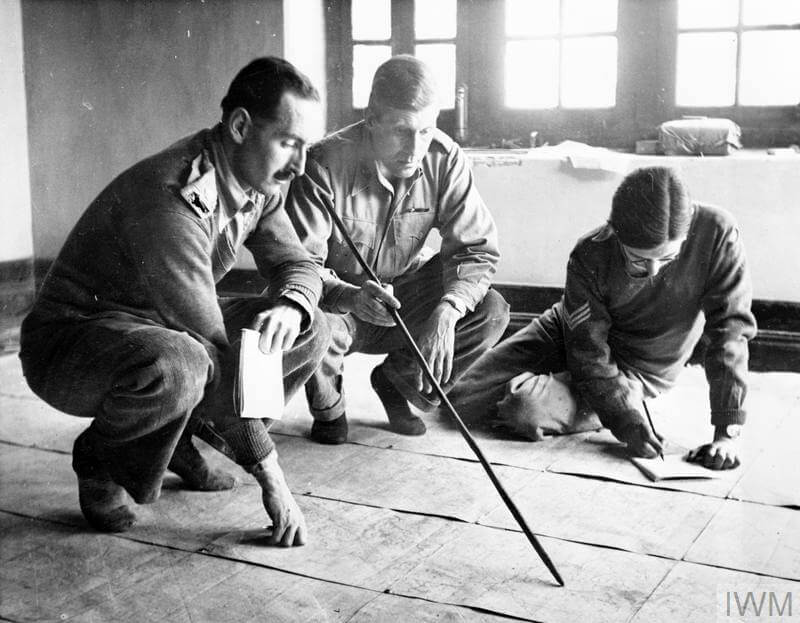

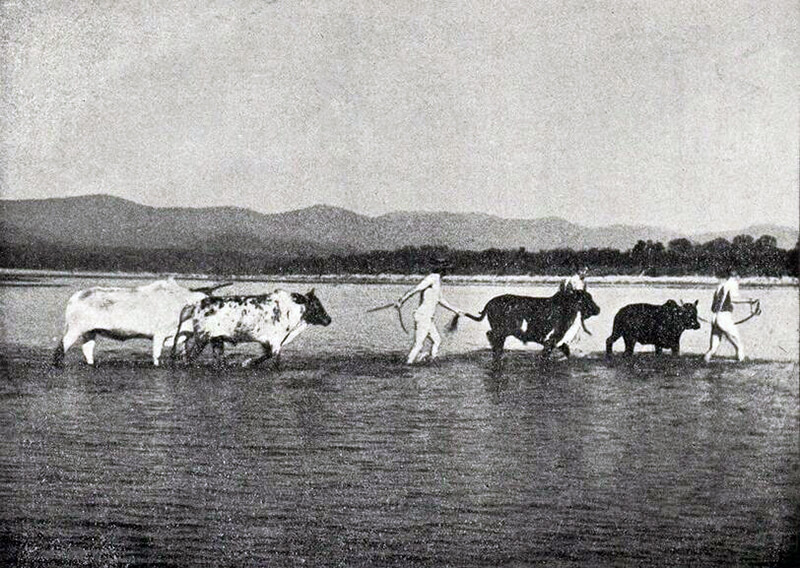
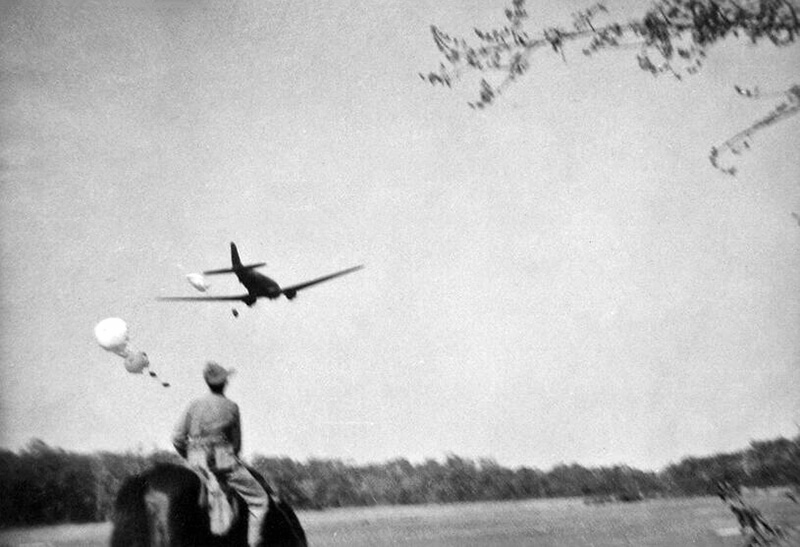
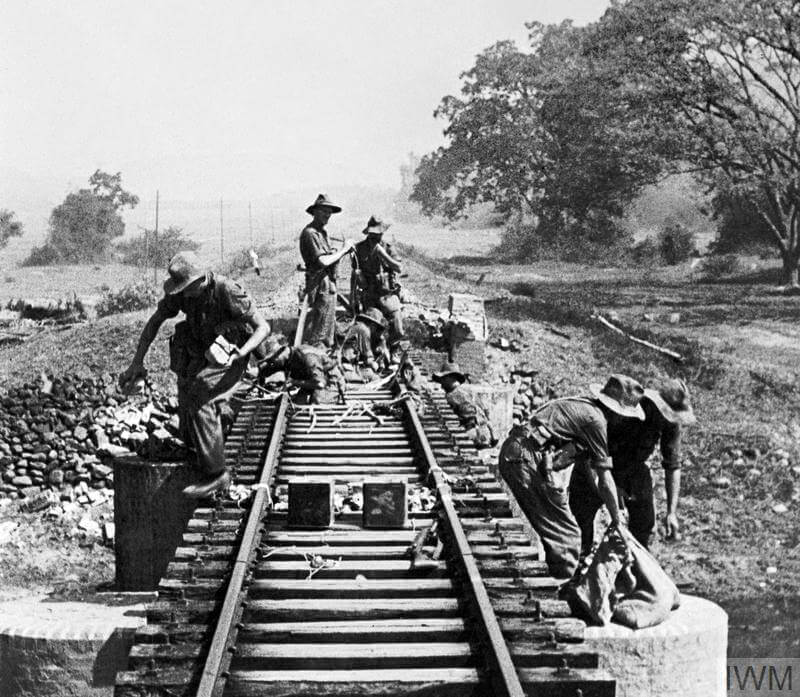

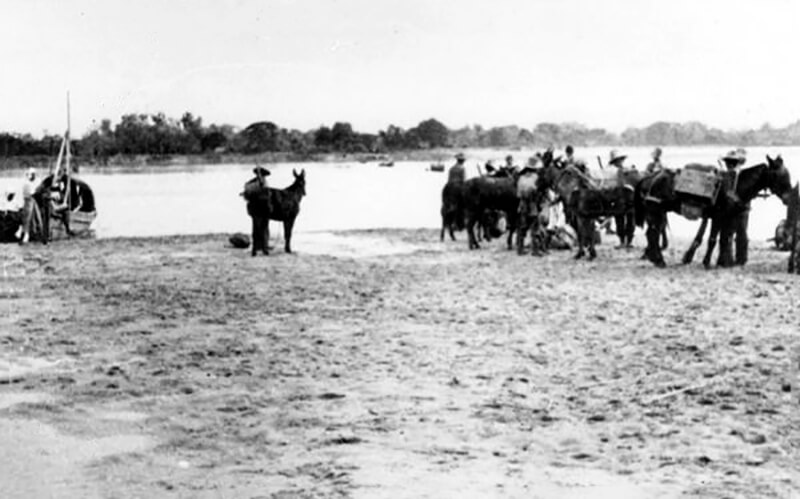
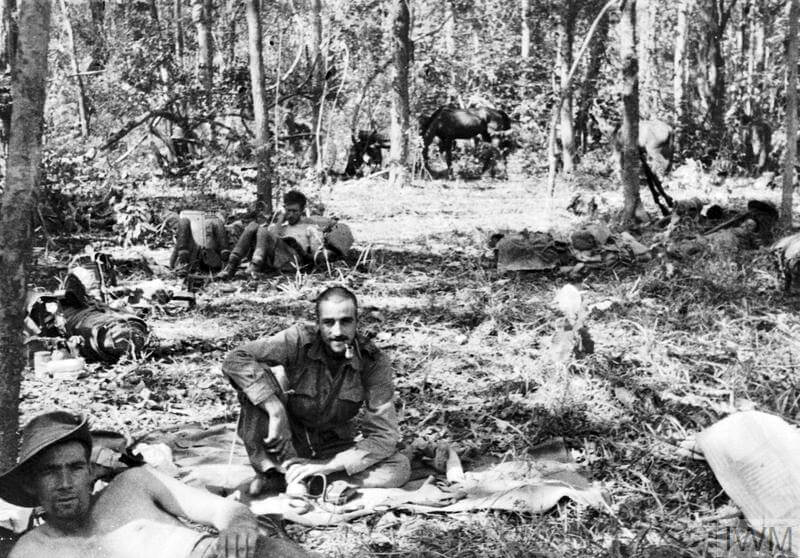
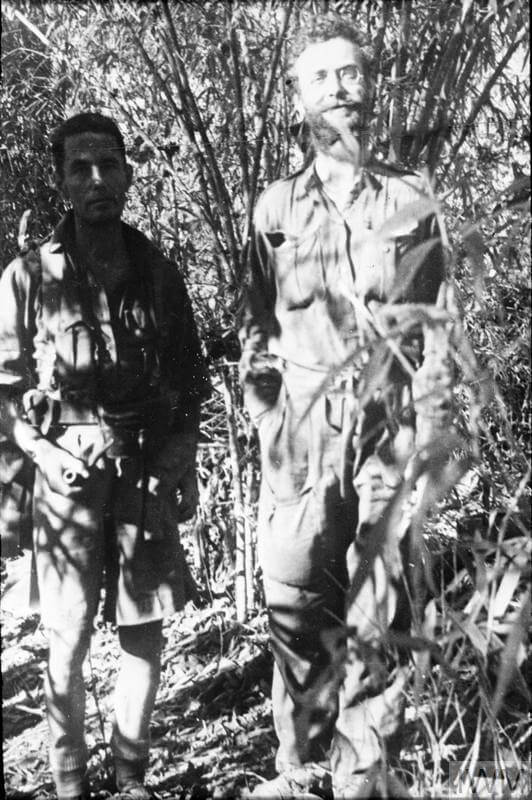
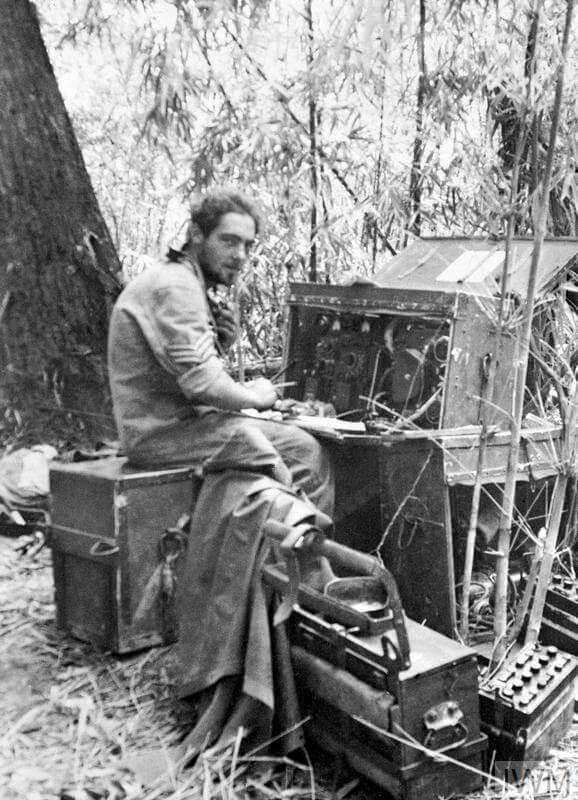
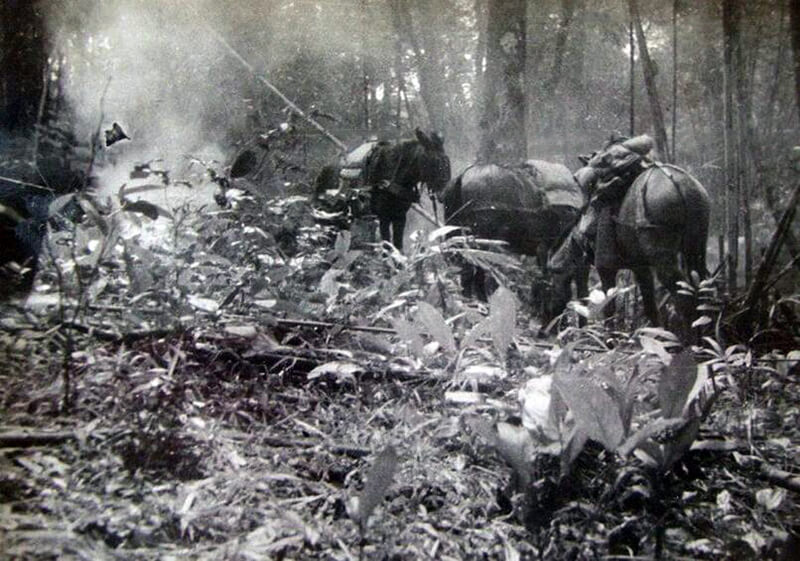
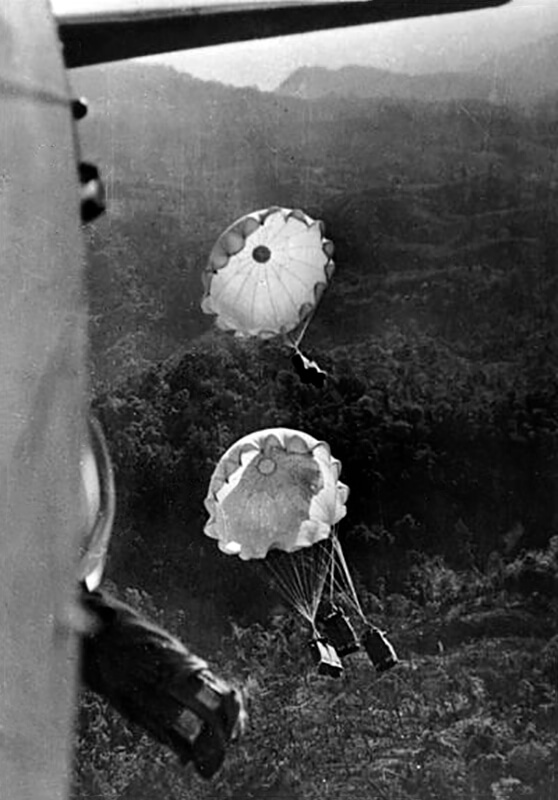
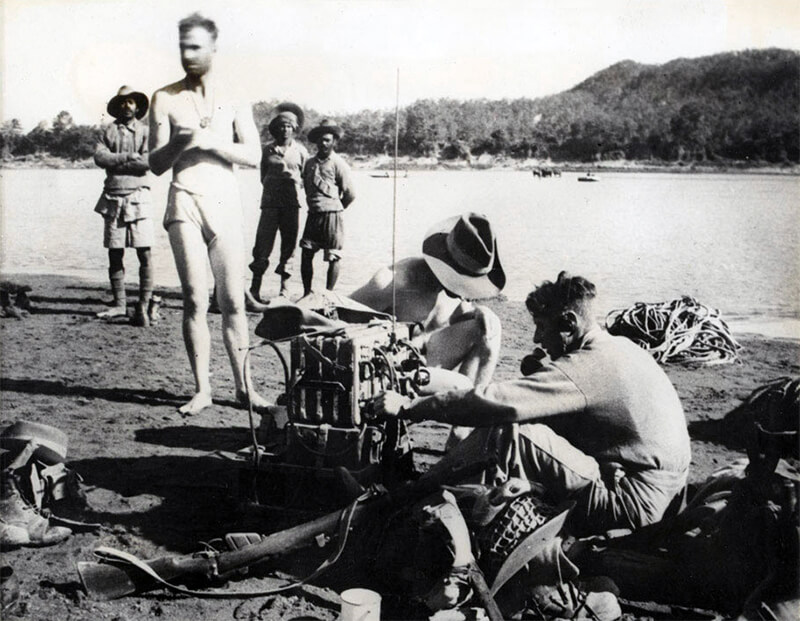
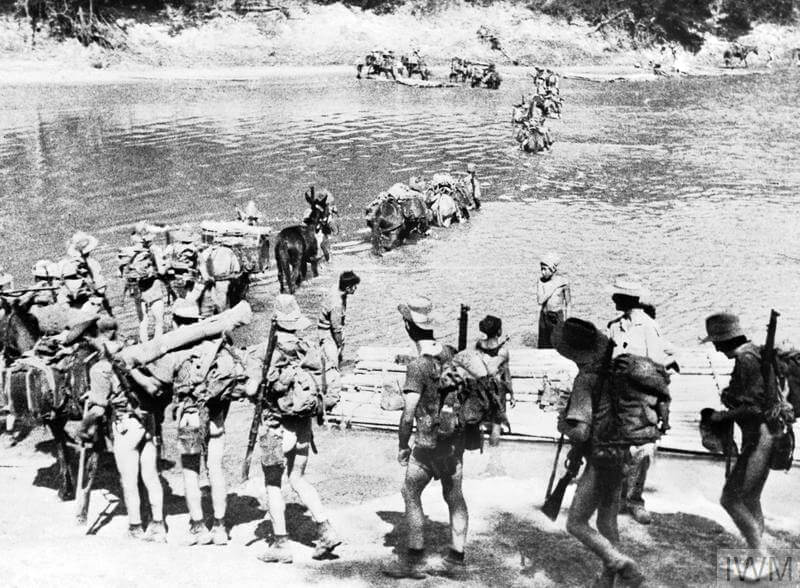
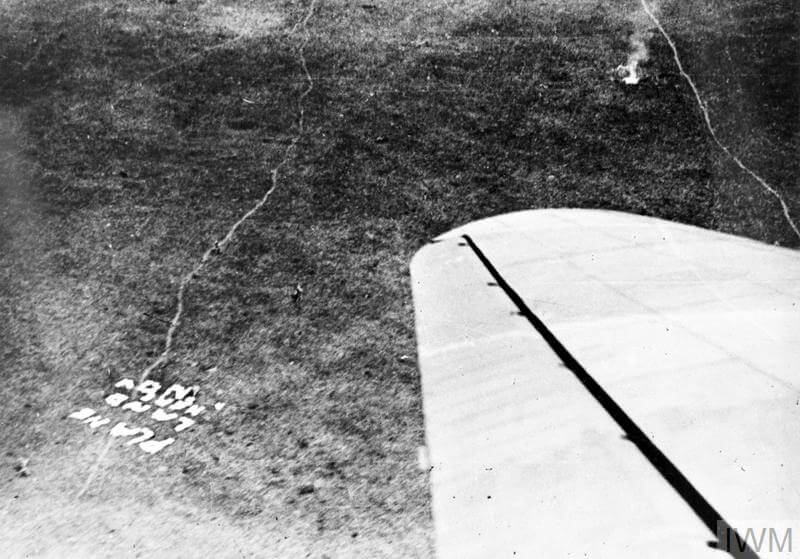
Two aircraft set off on Easter Sunday 1943. The column was located and supplies dropped by parachute. However, their first attempt to land was unsuccessful. The Chindits therefore had to lay out a landing strip which included a message written on the ground with parachutes stating ‘Plane land here now’. A few days later an aircraft returned and landed successfully. The sick and wounded men were then evacuated to safety. Copyright: © IWM. Original Source: http://www.iwm.org.uk/collections/item/object/205219283
